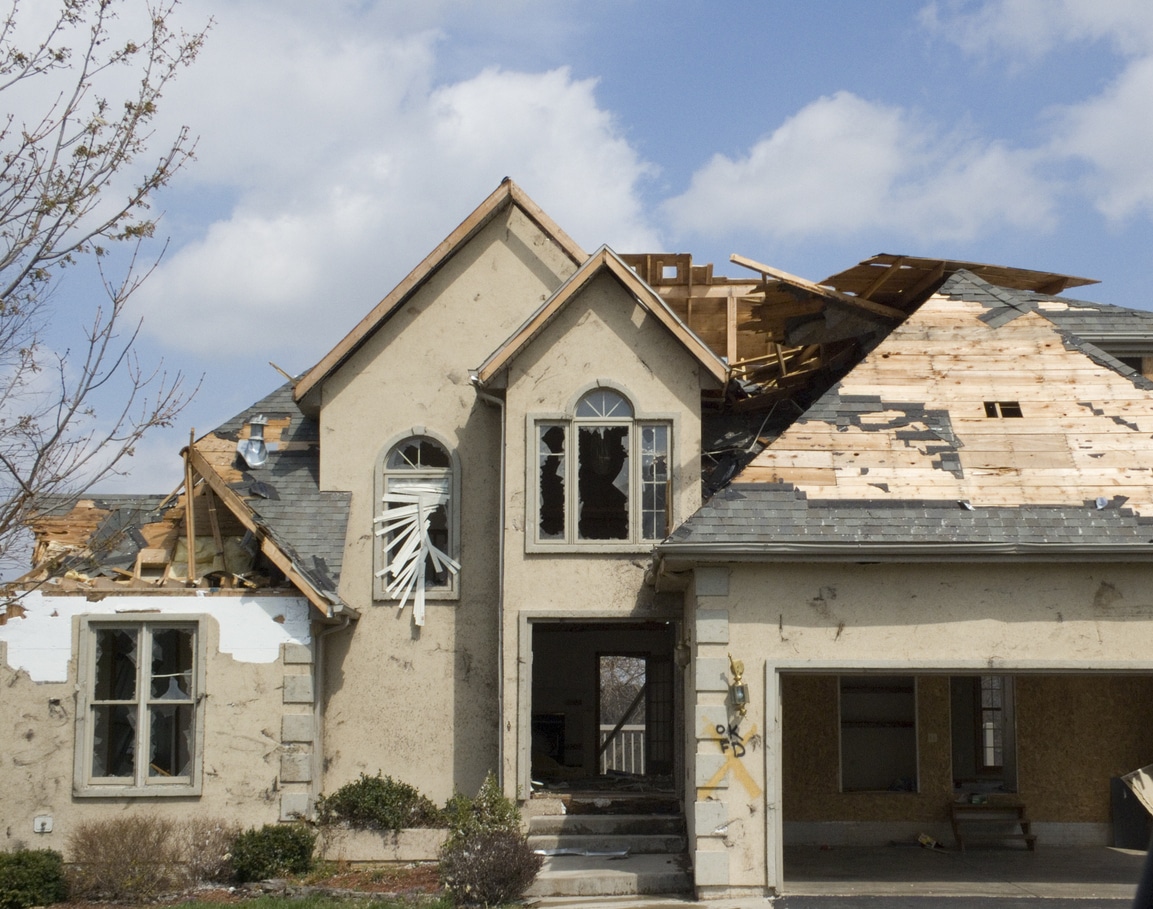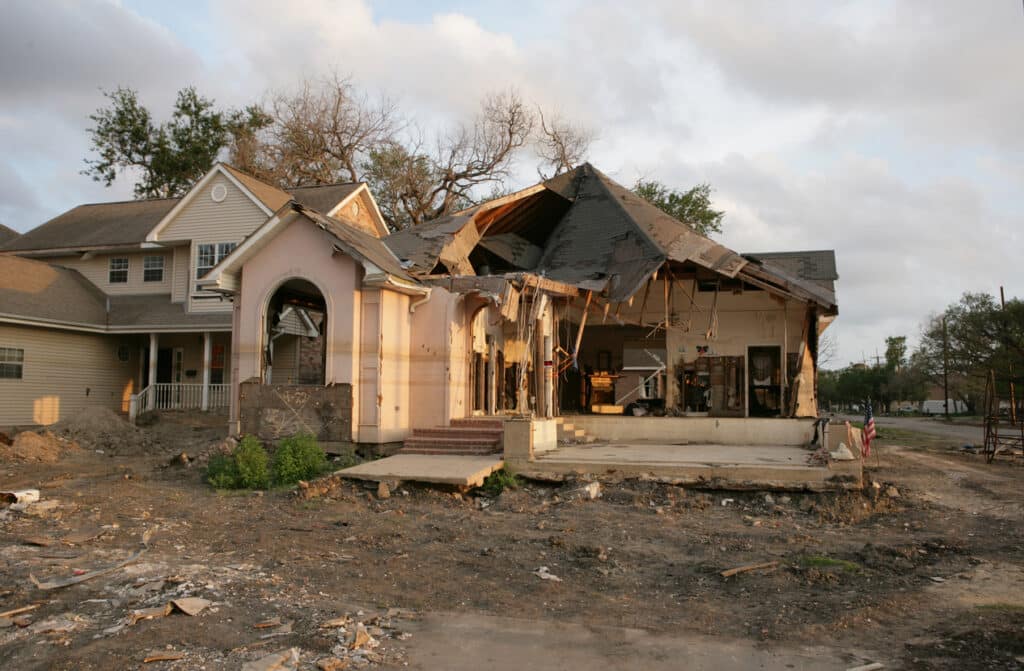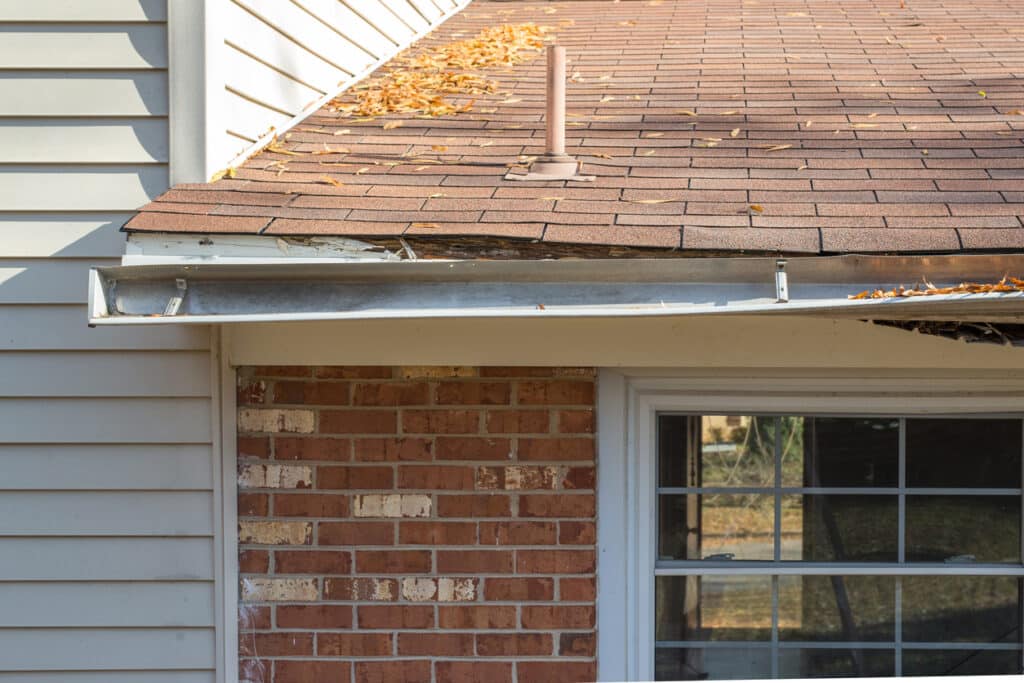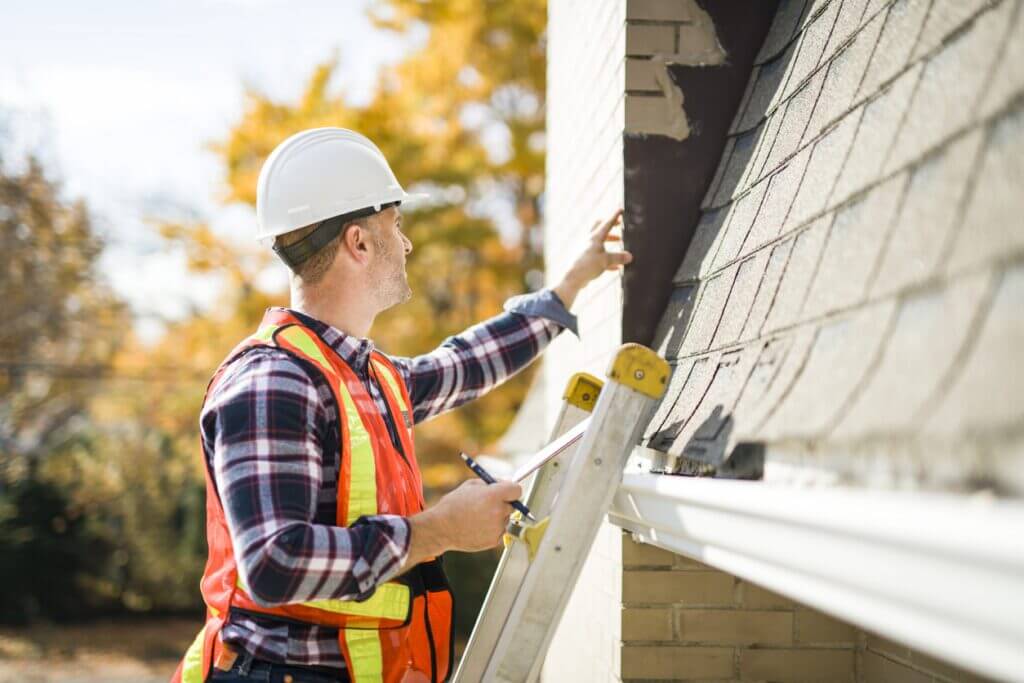
When your roof suffers damage, whether from a severe storm, hail, or just years of wear and tear, the cost of a full replacement can be overwhelming. The good news? In many cases, your homeowners insurance policy can help cover the expense.
But figuring out how to get insurance to pay for roof replacement isn’t always straightforward. From navigating policy language to handling inspections and filing the right documentation, homeowners in Atlanta often find themselves confused or stuck mid-process.
This guide breaks it all down. What your policy typically covers, what steps to take after damage, and how to avoid common mistakes that could jeopardize your claim. Keep reading to learn how to position yourself for a successful roof insurance payout, and ultimately, a safer home.
Will Insurance Cover a Roof Replacement?

The short answer: it depends on the cause of the damage and the type of homeowners insurance policy you have. Most homeowners are surprised to learn that while roof insurance can offer substantial financial protection, not all roof damage automatically qualifies for a full replacement.
Insurance companies assess the cause of the damage and the condition of the roof before approving any claim. Below, we break down what’s typically covered, what’s not, and why understanding your policy terms, especially ACV vs RCV, can make or break your claim when you’re figuring out how to get insurance to pay for roof replacement.
What Homeowners Insurance Typically Covers
Homeowners insurance generally kicks in when your roof is damaged due to sudden, accidental events. Here are a few scenarios where your policy may help pay for roof replacement:
- Storm Damage: High winds and hailstorms are common causes of roof damage in Atlanta. If a recent storm tears off shingles or causes structural issues, your insurance may cover a roof replacement.
- Fallen Trees or Debris: If a tree falls onto your home during a storm and damages the roof, that’s typically a covered peril.
- Fire or Vandalism: Fires, whether caused by lightning, electrical issues, or other accidents, are usually covered. Similarly, if your roof is intentionally damaged by someone else, your insurance may cover the replacement.
In any of these cases, the key is documentation. A detailed roofing invoice for insurance, dated photos, and a professional inspection report will help build a solid case for your claim.
What Homeowners Insurance Doesn’t Cover
Even the best roof insurance policies won’t pay for everything. If your roof has simply aged out of usefulness, or if there’s been a lack of maintenance, your claim will likely be denied. Here’s what usually isn’t covered:
- Normal Wear and Tear: Over time, all roofs degrade. Insurance companies view this as the homeowner’s responsibility and won’t pay to replace a roof that’s simply “old.”
- Neglect or Lack of Maintenance: If your roof had pre-existing issues, like leaks, mold, or broken flashing, that were never addressed, insurers may claim homeowner negligence and reject the claim.
This is often why some homeowners say they can’t get homeowners insurance because of roof issues. Many insurers won’t underwrite policies for properties with roofs that are too old or in poor condition.
Difference Between ACV vs. RCV Policies
When you file a roof claim, how much you’re paid depends on whether your policy offers Actual Cash Value (ACV) or Replacement Cost Value (RCV) coverage. This can significantly affect how much of the roof replacement cost you’ll need to pay out of pocket.
Here’s a quick comparison:
Policy Type | What It Covers | Payout Amount | Out-of-Pocket Costs |
Actual Cash Value (ACV) | Covers the depreciated value of your roof based on age and condition. | Lower. Only what the roof is worth today, not what it costs to replace. | Higher. You pay the difference between payout and full replacement cost. |
Replacement Cost Value (RCV) | Covers the full cost of replacing your roof with a new one of similar kind and quality. | Higher. Based on the current market cost of materials and labor. | Lower. You’re only responsible for your deductible. |
If you’re aiming to learn how to get a new roof from insurance, understanding this distinction is critical. RCV policies are more generous, but they often come with higher premiums. If your current policy is ACV and your roof is older, you may find your claim payout falls well short of what you need to fully replace the roof.
Step-by-Step: How to Get Insurance to Pay for a New Roof

Now that you understand the fundamentals of coverage, it’s time to move into action. Following a clear, methodical process is the single most important factor in how to get insurance to pay for roof replacement.
This step-by-step guide is your playbook for navigating the roof replacement insurance process and getting the best possible outcome.
1. Inspect for Damage
The moment a major storm passes and it’s safe to go outside, your first task is to assess your property. A preliminary check from the ground can give you a good idea of whether you need to file a claim.
Here’s what to look for:
- Missing or Damaged Shingles: Look for any shingles that are missing, cracked, curled at the edges, or flapping in the breeze.
- Granule Loss: Check your gutters and downspout areas for an accumulation of black, sand-like granules. These granules are the protective top layer of your shingles, and a significant loss is a sign of hail impact or advanced age.
- Dented Flashing and Vents: Hail will often leave dents and dings on the soft metal components of your roof system, like flashing, gutters, and turbine vents. This is often the clearest evidence of a hail event.
- Leaks or Water Stains: Don’t forget to check inside. Look in your attic for signs of water intrusion or check your ceilings for any new, unexplained water stains.
While a ground inspection is a good start, it’s no substitute for professional expertise. A certified roofer (like the team at Mr. Roofer) can safely get on your roof to identify and document damage that is invisible from the ground. Our team is trained to spot subtle signs of hail or wind damage that an insurance adjuster will recognize as legitimate.
2. Document the Damage
High-quality photographic evidence is your most powerful tool and forms the foundation of your entire claim.
The following is what you need to photograph:
- Overall Views: Take photos of each of the four sides of your roof to establish the overall condition and scope.
- Specific Damage: Get clear, close-up shots of dented flashing, lifted shingles, hail marks, or any other specific damage. For hail hits, placing a coin or ruler next to the dent can provide a useful sense of scale.
- Collateral Damage: Photograph any damage to surrounding items like window screens, gutters, downspouts, or air conditioning units, as this helps establish the severity of the storm.
- Interior Issues: If you have leaks, take pictures of the water stains on your ceiling or any visible moisture you find in the attic.
3. Contact Your Insurance Company
Most policies require you to report damage in a “timely manner,” so don’t wait weeks to make the call. When you speak to the representative, be clear and accurate.
State the date of the storm and describe the damage you’ve observed. Do not guess, speculate, or diagnose the full extent of the problem; simply report the facts. They will assign you a claim number; keep this number handy, as you will need it for all future correspondence.
4. Get a Roofing Estimate
Your insurance company will send its adjuster to create an estimate, but you should always get an independent one from a trusted, local roofing contractor. This detailed quote serves as a critical baseline and negotiation tool.
A vague estimate won’t work; you need what is essentially a preliminary roofing invoice for insurance purposes. It must be itemized, breaking down the costs for every single component and action, including materials (shingles, underlayment, drip edge), labor, flashing and ventilation replacement, and the cost of tearing off and disposing of the old roof.
5. Schedule the Adjuster Inspection
When the insurance adjuster schedules their visit, you must arrange for your roofer to be present. An experienced roofer, like those at Mr. Roofer, acts as your advocate on-site. Our team can walk the roof with the adjuster, point out every instance of damage (especially subtle hail hits that are easily overlooked), and ensure the scope of the project is accurately assessed.
6. Follow Up and Clarify
After the adjuster’s visit, you will receive a report called a “Scope of Loss” or a similar document outlining what they believe is covered. It’s vital to review this document carefully with your roofer and ask clarifying questions before you agree to anything.
Here are the key questions to ask your insurer:
- Is this estimate for a full replacement or only for repairs?
- My policy is [RCV or ACV]. Can you confirm how much depreciation is being withheld and how I can recover it?
- What is the exact amount of my deductible that I will be responsible for?
- What is the expected timeline for receiving the first check and the final payment after the work is completed?
If there are discrepancies or missing items, your contractor can help you request a revised scope or submit supplemental documentation.
Common Reasons Claims Are Denied

Receiving a denial or a lowball offer from your insurance company can be infuriating, but it’s not always the end of the road. Often, an initial denial is just the start of a conversation. To effectively challenge a decision, you first need to understand why it was made. Knowing these common denial reasons is a core part of learning how to get insurance to pay for roof replacement when you meet resistance.
“Old Damage” Labeled as Wear and Tear
This is perhaps the most frequent reason for denial. The insurance adjuster may determine that the roof’s failure isn’t due to a recent storm but is instead the result of its age and natural deterioration.
They might classify cracked shingles, blistering, or widespread granule loss as “wear and tear,” which is not covered. This is a subjective assessment, and a qualified roofer can often provide a compelling counter-argument, showing how the specific patterns of damage are consistent with wind uplift or hail impacts, not just old age.
Lack of Maintenance or Missing Documentation
Your roof insurance policy assumes you are performing reasonable upkeep on your property. If an adjuster finds evidence of long-term neglect, such as gutters clogged with debris, excessive moss growth, or shingles that were clearly missing long before the storm, they can deny the claim based on homeowner negligence.
Similarly, if you lack clear documentation that proves the damage is new and directly linked to a covered event, your claim will be significantly weaker.
Homeowner Delayed Reporting
If you wait several months or even a year to file a claim after a storm, the insurer has a valid reason for denial.
They will argue that the delay makes it impossible to determine if the damage was caused by that specific storm or a subsequent event. The longer you wait, the harder it becomes to prove your case for how to get a new roof from insurance.
Improper Inspection (Adjuster-Only Reports)
Sometimes a claim is denied or undervalued simply because the initial inspection was incomplete. An insurance adjuster might be rushed, unfamiliar with the specifics of your roofing material, or simply miss subtle but critical damage that a trained roofer would spot immediately.
If your roofer was not present during the inspection, the adjuster’s report becomes the only piece of evidence, and if it’s flawed, your claim payout will be too.
Tips for Countering Denials and Requesting Re-Inspections
If your claim is denied, don’t just accept it. It’s time to advocate for yourself.
- Review the Denial Letter: Read the letter carefully to understand the specific reason for the denial. It will cite a reason, and that is what you need to challenge.
- Compile Your Evidence: Gather your documentation, including your “before” and “after” photos, your detailed and itemized estimate from a professional roofer, and a written statement from the roofer explaining why the damage is consistent with a storm.
- Formally Request a Re-Inspection: Write a polite but firm letter or email to your insurance company. State that you disagree with their assessment and formally request that a second, different adjuster be sent to re-inspect the property.
- Cite Building Codes: A knowledgeable roofer can determine if a simple repair would violate local building codes. For example, some jurisdictions don’t allow new shingles to be placed over old ones, or require that a certain percentage of damaged roof necessitate a full replacement for safety and uniformity.
- Consider a Public Adjuster: If you continue to meet resistance, you can hire a public adjuster. Unlike the insurance company’s adjuster, a public adjuster works directly for you on a contingency basis to negotiate the claim on your behalf, ensuring you get a fair settlement.
When You Can’t Get Insurance Because of Your Roof

A roof nearing the end of its lifespan isn’t just a maintenance concern; it can directly impact your ability to get or even keep your homeowner’s insurance policy. Understanding this challenge is crucial, as many homeowners find they can’t get homeowners insurance because of a roof that insurers deem too risky.
Increasing Trend: Insurers Dropping Coverage for Roofs Over 15-20 Years Old
There is a clear and growing trend among insurance carriers to become more risk-averse when it comes to older roofs. Many insurers are now hesitant to write new policies for homes with roofs over 15-20 years old. Some are even issuing non-renewals for existing, long-term customers for the same reason, regardless of whether the roof has ever had a claim against it.
From their perspective, an aging roof is not a matter of if it will fail, but when, representing a significant financial liability they are no longer willing to take on.
Signs Your Policy Is at Risk
Your insurer will typically provide warning signs before dropping your coverage. If you see any of the following, it’s time to act proactively:
- A Required Inspection: You receive a letter stating that your property requires a roof inspection to maintain coverage. This is a clear signal that they are evaluating your risk profile.
- A Notice of Non-Renewal: This is the most direct warning. It’s a formal letter stating that your policy will not be renewed upon its expiration, often specifically citing the age or condition of your roof.
- A Steeply Increased Premium: If your renewal comes with a major price hike attributed to the age of your roof, the insurer is financially signaling that they consider your home a much higher risk to cover.
What to Do if You Can’t Get Homeowners Insurance Because of Roof
Facing a non-renewal notice can be alarming, but you have a clear path forward. Taking swift and decisive action is key to resolving the issue.
- Get an Immediate Professional Inspection: Get a thorough, professional inspection that provides detailed documentation of your roof’s actual, current condition, including photos and an assessment of its remaining functional life.
- Fast-Track Repairs or Replacement: If the inspection uncovers minor issues, getting them repaired immediately can sometimes satisfy the insurer. However, if the roof is simply too old, your best, and often only, option is to proceed with a full roof replacement. While this is a significant upfront cost, it’s far better than being uninsured.
- Work with a Knowledgeable Roofer: Choose a roofing company that understands the insurance industry’s documentation requirements. They can provide a “roof certification” or a comprehensive report after the work is done, which you can then present to an insurance agent as proof that your property is a low-risk asset, helping you secure the roof insurance you need without issue.
What a Roof Replacement Estimate for Insurance Should Include

To successfully navigate the process of how to get insurance to pay for roof replacement, your roofer must provide a highly detailed estimate that justifies every dollar. This document, formatted like a preliminary roofing invoice for insurance, serves as the core evidence for your claim.
Detailed Materials List
Every component needed for the job must be listed as a separate line item. This transparency allows the adjuster to see exactly what is required to bring your roof back to standard.
Component | Its Purpose in the Roofing System |
Underlayment | Waterproof barrier beneath shingles. |
Flashing | Metal used around chimneys, vents, and valleys. |
Vents | Ridge or box vents for proper ventilation. |
Shingles | Brand, type, and quantity specified. |
Drip Edge | Edge flashing to prevent water intrusion. |
Labor Breakdown
The estimate should separate labor costs from materials. It should reflect line items for:
- Tear-off and disposal
- Installation
- Cleanup
- Permits (if required)
This helps insurers assess fair market value and ensures you’re not shortchanged.
Code Upgrade Notes (Georgia-Specific)
Georgia building codes may require certain code upgrades during a roof replacement, such as specific underlayment types, ventilation minimums, or decking repairs. Your estimate should note these requirements clearly. Most roof replacement insurance policies cover code upgrades, but only if they’re documented.
Photos or Diagram Annotations
Attach photos of the damage with the estimate, or include roof diagrams marked with affected areas. Visual context helps adjusters see the full scope and strengthens your claim.
“Scope of Loss” Documentation for Adjuster Review
This is a summary that compares what your roofer recommends versus what the adjuster has listed in their initial report. It should highlight:
- Any missing or undervalued items
- Justifications for full vs partial replacement
- Differences in measurements or materials
Having a complete scope of loss helps you align your contractor’s proposal with your insurer’s expectations and avoid underpayment.
Tips to Make Your Roof Claim Easier
Filing a successful roof claim doesn’t have to be stressful if you stay proactive and organized. These tips can simplify the process of how to get insurance to pay for roof replacement and improve your chances of getting a new roof.
1. Keep Maintenance Records and Photos
Insurance companies look for signs of neglect. Keep records of past repairs, inspections, and regular maintenance. Date-stamped photos of your roof in good condition can help prove that new damage isn’t due to wear and tear.
2. Request a Roof Inspection After Every Major Storm
Storms are one of the leading causes of roof replacement insurance claims. After heavy winds or hail, schedule a professional inspection, even if you don’t see visible damage. Early detection makes claims easier and avoids delayed reporting issues.
3. Ask Your Roofer to Attend the Adjuster Visit
Never leave it to the adjuster alone. Have your roofer (like Mr. Roofer) present to point out all damage, explain material needs, and clarify why a full replacement may be necessary. This ensures nothing gets overlooked.
4. Don’t Delay—Claims Windows Are Often 6-12 Months
Most policies limit the time you have to file a claim after damage occurs. Waiting too long can lead to denied claims. If you’re hoping to get a new roof from insurance, act quickly and follow through with inspections, documentation, and submission.
A little preparation goes a long way. Follow these steps to keep your roof insurance claim on track and avoid costly delays.
Conclusion: Let Insurance Work for You—Not Against Yo
Getting insurance to pay for roof replacement doesn’t just hinge on having a damaged roof. It’s about knowing the right steps, documenting everything accurately, and staying ahead of deadlines. From understanding coverage nuances to preparing detailed estimates and maintaining proactive communication, each action matters, whether you’re in Marietta, Roswell, Alpharetta, or Midtown Atlanta.
Insurers are increasingly cautious, especially with aging roofs. Therefore, acting quickly with strong documentation, can make all the difference between a denied claim or a fully covered roof replacement.
If you’re facing damage, a non-renewal, or just feel overwhelmed by the process, let the experts at Mr. Roofer guide you. With years of experience serving communities across Sandy Springs, Johns Creek, Cartersville, and beyond, Mr. Roofer knows exactly how to navigate insurance claims and help you get what’s owed.
Contact Mr. Roofer today for a professional roof inspection and guidance through every step of your claim. We’ll help you protect your home and get the roof replacement you deserve.
